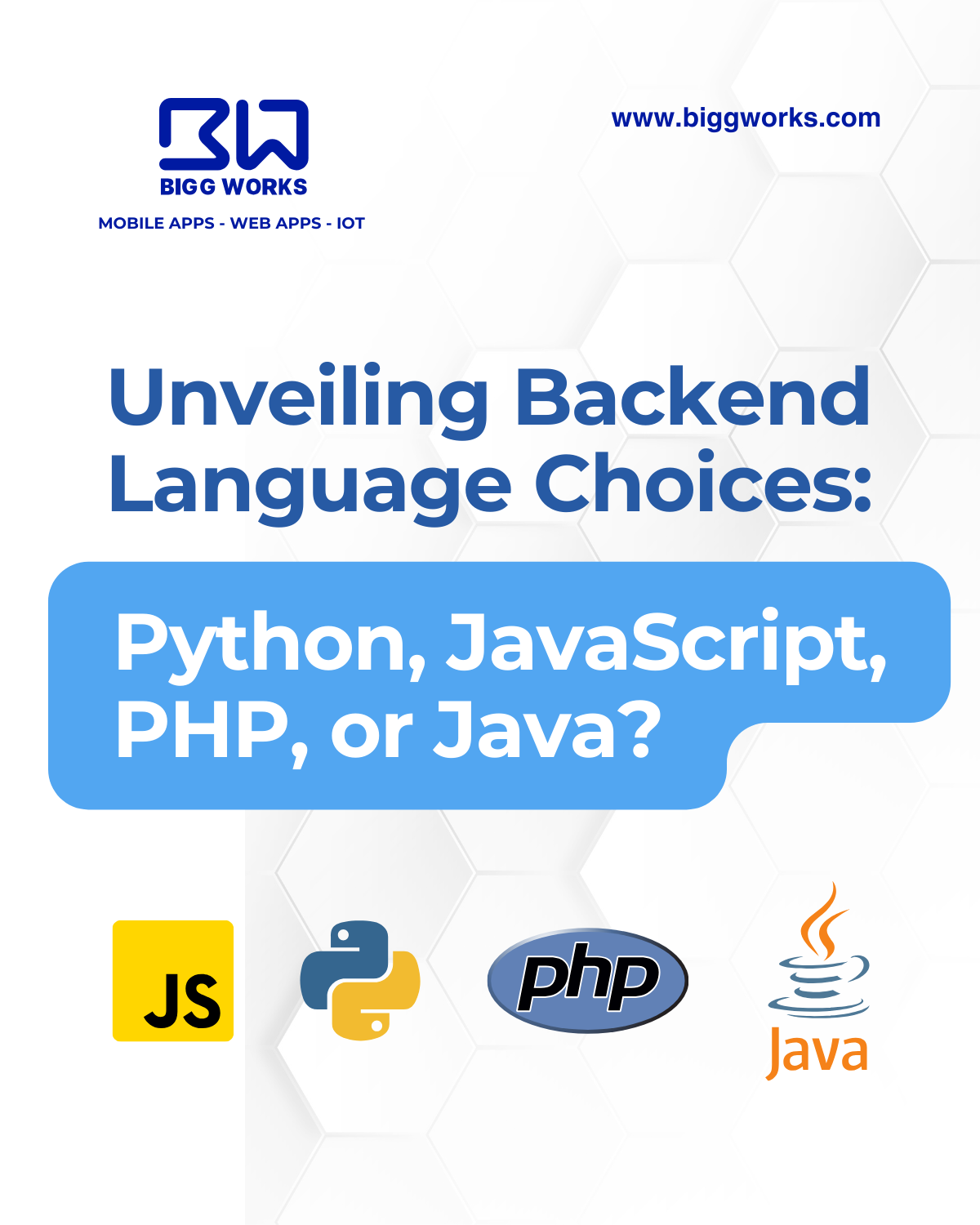Unveiling Backend Language Choices: Python, JavaScript, PHP, or Java?

The selection of a backend programming language is a pivotal choice in web development. This article delves into the advantages and disadvantages of four prominent options: Python, JavaScript, PHP, and Java. By understanding their unique features, developers can make informed decisions that align with their project's goals.
Readability:Python's clean syntax enhances code readability and reduces development time.
Versatility:Python is well-suited for various applications, from web development to data analysis.
Vibrant Community:A robust community offers ample resources, libraries, and frameworks.
Performance:While Python is efficient for most tasks, it might not be the best choice for highly performance-sensitive applications.
Global Interpreter Lock (GIL):GIL can limit Python's ability to fully utilize multi-core processors.
Full Stack Unity:JavaScript allows for using the same language on both frontend and backend (Node.js), streamlining development.
Asynchronous Programming:JavaScript's asynchronous capabilities enhance real-time interactivity.
Extensive Libraries:A plethora of libraries and frameworks (Express.js, Nest.js) expedite backend development.
Callback Hell:Managing complex asynchronous code might lead to callback hell.
Performance:JavaScript might not be as performant as other languages for certain tasks.
Web-Centric:PHP's history in web development has led to a strong ecosystem tailored to web projects.
Ease of Use:PHP is beginner-friendly, making it an ideal choice for rapid development.
Server Compatibility:PHP is widely supported by various web servers.
Inconsistencies:PHP's history has led to some inconsistencies and a lack of standardization.
Security Concerns:PHP's popularity has made it a target for security vulnerabilities.
Portability:Java's write once, run anywhere philosophy ensures compatibility across platforms.
Scalability:Java's stability and performance make it suitable for large-scale applications.
Strong Typing:Java's strong typing system aids in catching errors during development.
Verbosity:Java's verbosity might lead to longer code compared to other languages.
Learning Curve:Java's object-oriented nature might require a learning curve for newcomers.
The decision between Python, JavaScript, PHP, and Java hinges on your project's complexity, your team's expertise, and your desired development speed. Consider these factors:
Project Type:Python's versatility suits a wide range of applications, while JavaScript's full stack capabilities might be advantageous for certain projects.
Team Expertise:If your team is proficient in a particular language, it might streamline development.
Scalability:For larger applications, Java's performance and scalability might stand out.
Ecosystem and Community:Each language boasts a distinct ecosystem; choose one that aligns with your project's requirements.
By evaluating the strengths and weaknesses of Python, JavaScript, PHP, and Java, developers can make an informed decision that aligns with their project's needs. The chosen backend language sets the foundation for a successful development journey, enabling the creation of robust, efficient, and scalable applications that meet user expectations and business objectives.
#WebDevelopment #WebApps #WebDesign #FrontEnd #BackEnd #Programming #Coding #SoftwareEngineering #UIUX #FullStack #JavaScript #HTML #CSS #ReactJS #NodeJS #PHP #Python #WebDeveloper #MERN #MEAN